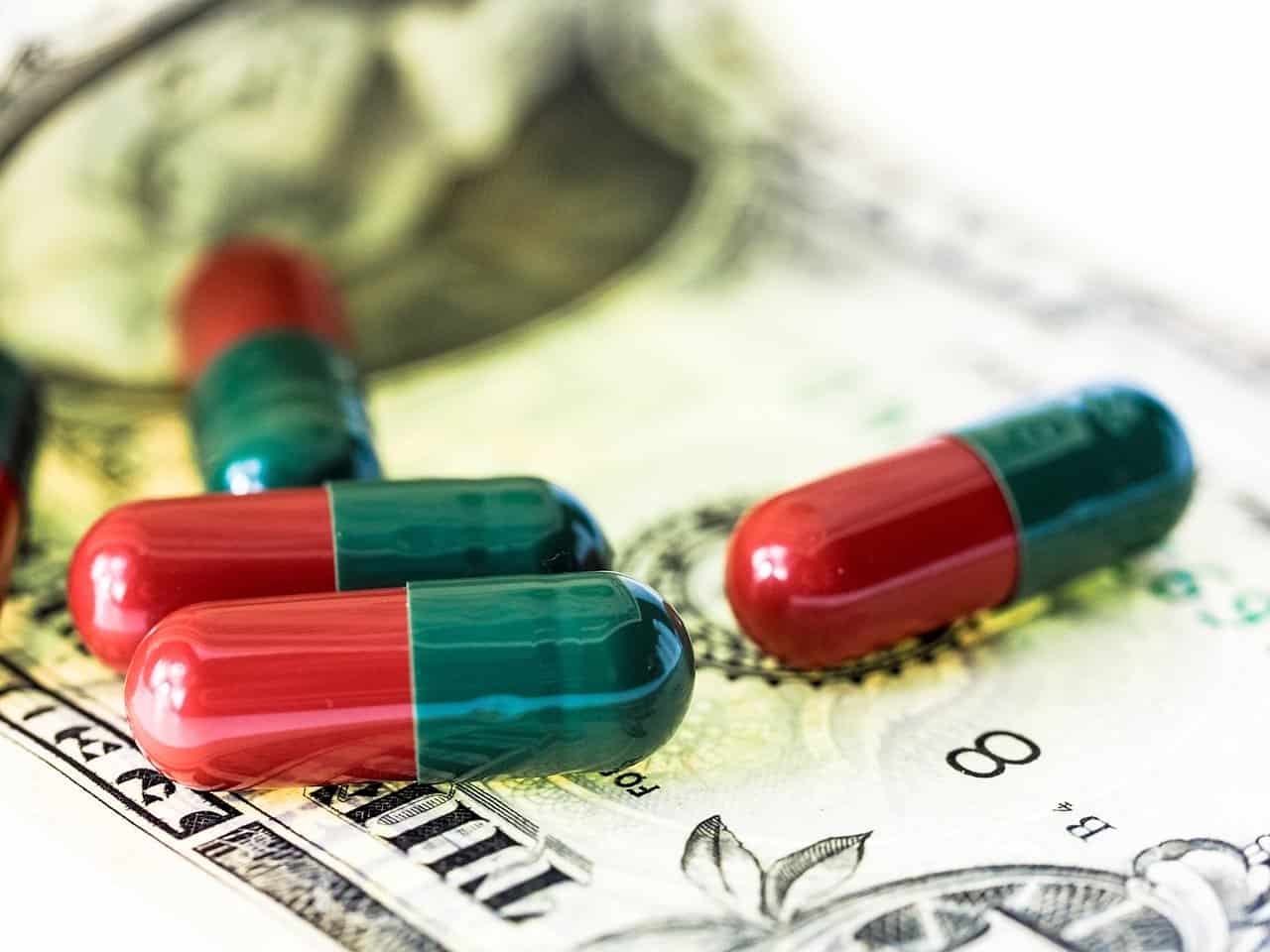Canadian Pharmacies: Helping Millions of Americans Without Health Insurance
high drug prices

Just 955 miles from the Canadian border in the state of Minnesota, 21 year old Jesimya David Scherer-Radcliff of St. Louis Park died on June 28, 2019. While his official cause of death was declared to be “complications from diabetes,” Jesy (as he was known to his loving family and many friends), was one of a growing list of victims of a terrifying new reality facing millions of Americans living with a chronic illness: the increasing costs of the medications they need to live.
Like a growing number of chronically ill patients who can no longer afford their prescriptions due to extreme price hikes in recent years by drug manufacturers in the United States, Jesy took to rationing his medication — which for some, can be a death sentence.
As if one preventable and unnecessary death, especially that of a young adult just starting out in life weren’t heartbreaking enough, one of the mourners at Jesy’s funeral had something in common with his grieving parents and community.
Nicole Smith-Holt lost her son Alec less than a month after his 26th birthday, after he aged out of her insurance plan. Although Alec was employed and earned over $30,000 per year according to his mother, he was facing a monthly price tag of over $1,000 for the multiple vials of insulin he needed to stay alive, due to unaffordable monthly insurance premiums and an additional $7,000 in deductibles.
In addition to the risk of serious health complications and possible death, many people struggling to pay for their medication are also faced with mounting personal sacrifices, like selling off their possessions or choosing between paying rent (or facing eviction). The cost of medication in America has forced people to alter their entire life just to pay for an illness that they didn’t choose.
The Shocking Cost of Everyday Prescription Medications in the United States
Unfortunately, the above stories are not rare. For millions of Americans, this is the reality they face every time they need to refill a prescription.
Basic prescription medications like asthma inhalers and EpiPens have doubled or even tripled in price in recent years. According to Reuters, the price of EpiPens, a popular epinephrine auto-injector, rose an eye-popping 535% from 2007-2014, from roughly $100 for a two pack prescription to $600.
While EpiPens are only needed in case of an allergic reaction and not as a monthly prescription, going without it can literally mean life and death for a person with a severe allergy. According to statistics, over 30 million Americans and more than five million children suffer from at least one food allergy, and many suffer from several.
For parents with young children who suffer from potentially life-threatening allergies, skipping the medication is not an option. But the price hikes in recent years have made EpiPens increasingly unaffordable for the people that need them most.
Why Are Prescription Medications So Expensive in the United States?
The ongoing debate over the cost of healthcare and prescription drugs in the U.S. has been ongoing for nearly a decade — if not longer — yet few meaningful changes have been made. The crisis continues, dragging millions of Americans from all walks of life along with it. And the problem just seems to be getting worse.
The U.S. healthcare system is like a complex maze, and there are a number of complicated factors at play when it comes to the price of essential medications like, asthma inhalers, cholesterol medication, EpiPens, and hormone therapy, to name just a few.

A System Driven by Profit
In a system designed to prioritize profit for corporations and maximize return for shareholders, moral and ethical concerns about how the cost of prescription medications affect the people whose lives depend on them don’t factor into the decision making process.
When generic drug manufacturer Mylan acquired the rights to sell the EpiPen in 2007 and subsequently hiked the price from less than $60 to over $500, the company raked in a profit of over $1 billion by 2015. Some have called this especially shocking in light of reports that the EpiPen — which consists of a measured dose of epinephrine and the auto-injector it comes in — only costs between $20 - $30 to manufacture. (The lifesaving dose of epinephrine itself costs as little as $1).
A near total lack of government regulation and control over the pharmaceutical industry allows companies to essentially price gouge consumers, putting millions of lives at risk in the process, with little fear of repercussions or consequences.
To make matters worse, The Los Angeles Times and other sources report that the pharmaceutical industry spends at least $30 billion per year on marketing and advertising to both doctors and the American consumer.
According to the Center for Responsive Politics, "Big Pharma" also outspends virtually every other industry in lobbying dollars, spending hundreds of millions of dollars every year to pressure politicians into blocking any reform measures aimed at cutting costs and protecting consumers from outrageous price spikes on the medications they rely to remain healthy and stay alive in many cases.
Administrative Waste and Insurance Company Overhead
In addition to exorbitant pricing, the American health insurance system has been found to be up to four times more expensive than the Canadian system due to administrative costs and waste. According to recent studies, the United States spends approximately $2,500 per person on administrative costs alone, compared to just over $550 in Canada.
In 2017, administrative overhead costs attributed primarily to insurance companies, was over $800 billion. As analysts and critics of the U.S. health insurance industry have pointed out, the staggering amount of money the country spends just on administrative costs alone would be more than enough to provide comprehensive insurance for every citizen.
But administrative waste isn’t just a problem for insurance companies. Studies have found that American doctors actually spend more time and practice resources — including staff — on paperwork, billing, and dealing with insurance company bureaucracy than they do with patients.
The Problems with Patents
Even though there are cheaper, generic versions of many brand name prescription drugs, from insulin to steroids and antibiotics, patent protections allow private drug manufacturers to dominate the market, neuter competition, and limit consumer access to more affordable generic medications.
Additionally, the patent process itself is complex and opaque, making it possible for a company to change a single element of a medication in order to establish a new patent or extend the life of an existing one, sometimes by as much as a decade or longer. Asthma inhalers are a good example of this in action.
Drug manufacturers in the United States can make a simple change to the canister — not the medication itself - and file a new patent that treats it like a new medication, despite the fact that it’s essentially the same.
Canadian Pharmacies: The Same Drugs, Cheaper
Pharmaceutical companies and drug manufacturers in the for-profit industry spend hundreds of millions of dollars on advertising and marketing every year because it works. Many people mistakenly believe that enforcing price caps to prevent the type of runaway price gouging that American consumers currently face would actually lead to less access and poor quality.
But in reality, the prescription medications sold in Canadian pharmacies are not only subject to extreme quality control measures before they hit the market, but they come from most of the same manufacturers that operate in the U.S. The only difference is that the Canadian government places caps on what manufacturers can charge Canadian consumers for prescription medications, keeping essential drugs like insulin, asthma inhalers, beta blockers, statins, and hormone therapy to name a few affordable for everyone. A similar situation exists in many other countries.

A Choice That Leaves Millions with No Choice at All
For the growing number of Americans who can’t afford to spend hundreds or even thousands of dollars every month on the prescriptions they need, access to affordable medications from international and Canadian pharmacies may literally be the only thing keeping them alive or helping them to avoid serious health complications.
But even Americans with some form of health insurance struggle to meet high monthly premiums, co-pays, and astronomical plan deductibles, which can be as high as $10,000 depending on the plan. Even with health insurance, changes to how a plan is administered, losing or changing jobs, aging out of a parent’s plan, or seeing a doctor out of network can all affect price and access for many of the Americans relying on private and for-profit insurance plans.
Canadian Pharmacy Advantage: Why Prescription Drugs Are Cheaper in Canada
Canadian pharmacies and international ones offer a lifeline for many desperate and vulnerable Americans who can’t afford the prescription medication they need. In the summer of 2019, Vermont Senator Bernie Sanders famously escorted a bus carrying a group of type 1 diabetics across the border from Michigan to Canada to purchase the insulin they couldn’t afford to buy at home.
But as some of the members of the “caravan” pointed out, physically crossing the border is not a sustainable or viable option for most people, much less millions of uninsured or underinsured Americans desperately in need of affordable medication. Ordering prescription medication online from a reputable Canadian pharmacy or international online pharmacy helps to ease the burden for American consumers that can’t just pick up and take a trip to Canada every time they have to fill a prescription.
Why Are Canadian Drugs So Much Cheaper?
There are several factors that keep prescription drugs affordable and accessible in Canadian pharmacies. For one, the government sets limits on how much drug companies can charge, and negotiates prices with manufacturers. This protects Canadian consumers from the inflated drug prices consumers face in the United States.
Prescription Drug Costs in the United States vs. Canada
American consumers unfamiliar with how Canadian pharmacies work are often shocked to learn just how much more affordable the same medications are across the border. Here are just the dramatic costs of two separate medications between the US and Canada:
The actual costs fluctuate, and some drugs have generic alternatives that can lower the costs and lead to significant savings. But in many cases, even generic versions of prescription medications are overpriced and unaffordable for many Americans.
For example, after massive public outcry and government scrutiny over the inexplicable price spikes for EpiPens, Mylan made a generic version available in the United States which still costs between $150 - $350 depending on the pharmacy and other factors. In Canada, where the brand name version of the EpiPen is the only option available, the price ranges between $100 - $150 — still cheaper than the generic version in the United States. Learn More About buying From a Canadian Pharmacy Living with health problems and life-threatening illnesses is stressful enough, and we believe that getting the medications you need should not be a burden. For more information, contact NorthWestPharmacy.com today by calling 1-866-539-5330 (toll free), or contact our customer service team online.